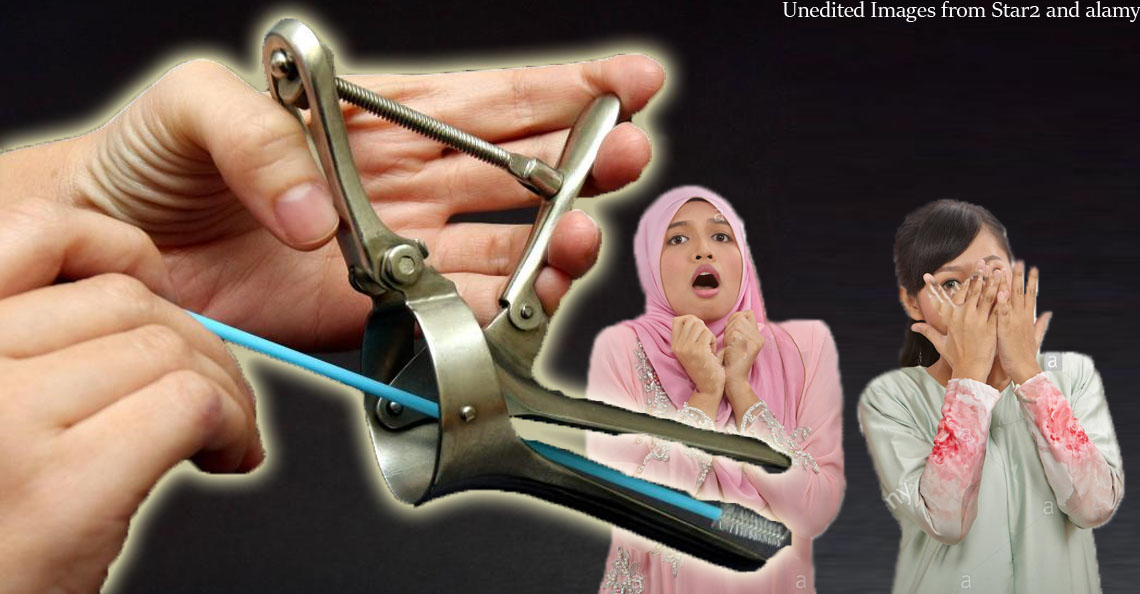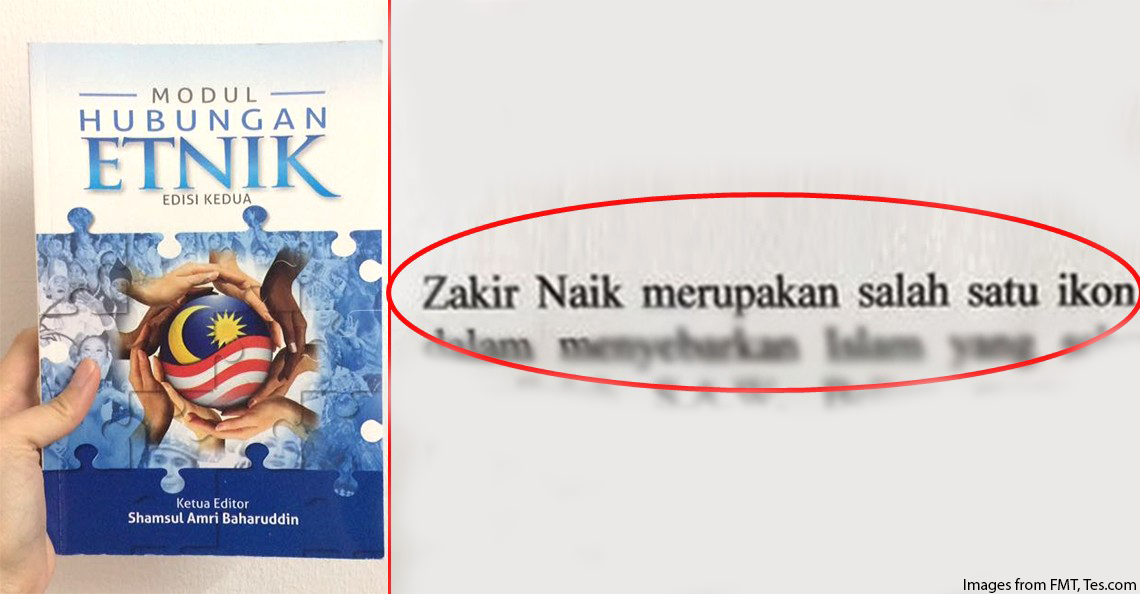Publish or perish: The toxic KPI forcing Msian lecturers to produce low quality research
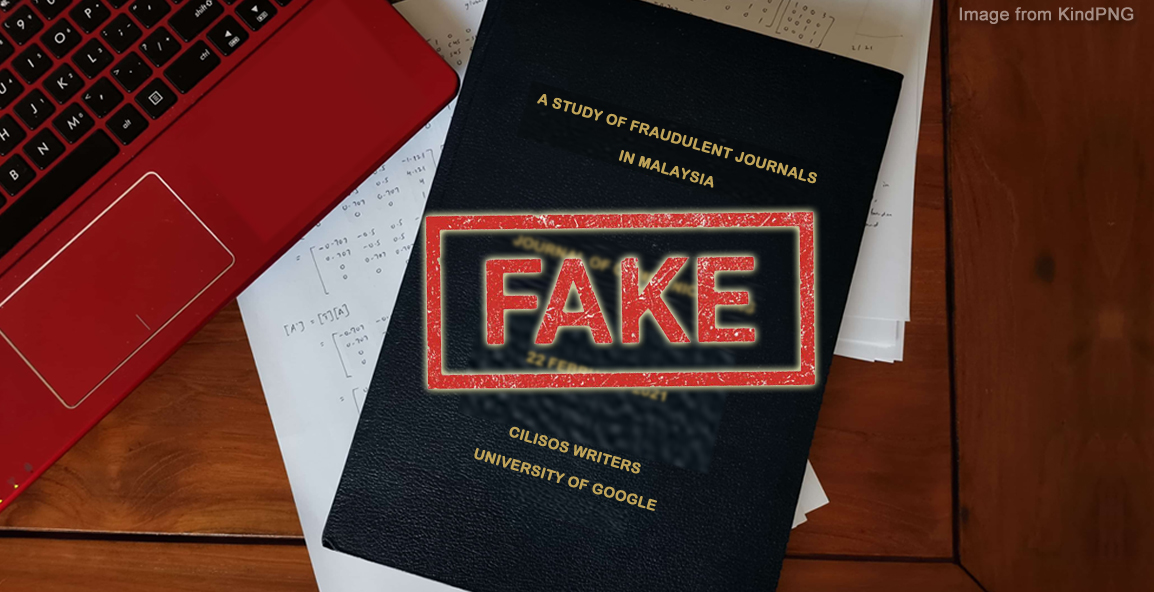
- 1.5KShares
- Facebook1.5K
- Twitter9
- LinkedIn13
- Email9
- WhatsApp37
Mention the word research papers and you’re probably thinking of old professors or having a traumatic flashback to your final year project in Diploma or Bachelor’s Degree. But what if we tell you that Malaysia is one of the top producers of research papers in the world?
According to the World Bank Data, Malaysia published 23,661 research papers in 2018, beating our kiasu neighbour, Singapore, which published half of that amount (11,459). That’s probably the first time we ever beat Singapore in terms of education.
But can we even consider this an achievement seeing how Malaysia was recently accused of publishing these papers in fraudulent journals? Malaysia was even listed among the top five countries in the world to do that.

Waitamin. What’s a fraudulent journal and how did we end up publishing a lot of research papers in these journals?
We got in touch with Jay (not real name), who’s a lecturer in a local university to find out more about this. But let’s start with a really basic question – how difficult is it to publish a research paper in Malaysia?
It’s pretty easy to publish a research paper… and, sometimes, for FREE
Jay shares that the process of publishing a research paper is not all that complicated. In fact, it’s similar to the process of writing your thesis for your final year project!

“You conduct a study, write it up, and send it to one of the journals in your field.” – Jay to CILISOS.
But the criteria of getting published differs from one journal to another and it totally depends on the ranking of the journal. Jay mentioned that journals are divided into four quartiles according to their qualities that are ranked by international organisations like Scimago or SCOPUS.
“Q1 journals are typically journals that are cited a lot and have high impact factors (IF) while Q4 journals have way, way less citations (low IF).” – Jay.
So, it makes sense why it’s difficult to get published in high-ranking journals (Q1 – Q2) as they’re credible. However, Jay pointed out that he managed to publish some of his research papers in these journals for free though some journals require a certain fee.
But it’s noteworthy that most journals that require fees may have lower ranks (Q4). Jay said that it’s possible to get your papers published in these journals, as long as you have the money for it.

Based on a quick Google search on this, we found that the journal fees range from RM250 to RM4,000 (USD1,000). But with research grants provided by Malaysian universities and even the Ministry of Higher Education, journal fees may not exactly be a problem.
Jay pointed out that most fraudulent journals come from Q4 or unranked journals. In short, fraudulent journals typically publish questionable content that lacks research quality.
But guess who’s most guilty of publishing in this kind of journal?
Lecturers, whose rice bowls depend on publishing these papers
If you think a lecturer’s duties are only preparing for classes, teaching, and dealing with students daily, you’re probably wrong. Jay said that a lecturer does more than just those things for pretty low pay.
On top of those duties, Jay shares that a lecturer also has to handle administrative work, handle marketing AND publish at least TWO (or SEVEN) research papers every year. However, unlike other duties, publishing research papers can bring extra ka-chings (read: bonus) or even a promotion for lecturers.
“Let’s face it, we get paid peanuts, so the bonus or promotion is a huge incentive.” – Jay.
And when we say lecturers, we include those even without a PhD yet. But aside from getting promoted, why do they have to do this? Easy answer: to assist universities in chasing world rankings.

Just in case you don’t know, one of the key factors that determine a university’s rank in the world, according to Times Higher Education, is the number and quality of research papers produced by the university. QS World University Rankings, on the other hand, would look into the number of research papers published by faculty members (aka lecturers).
This is probably why Jay said that Malaysian universities typically set a KPI for lecturers to publish research papers besides using increments to lure lecturers to publish these papers. And this is how the ‘publish or perish’ culture was formed in the education industry.
So, with all these pressures lecturers are facing, this may be why…
SOME lecturers or institutions take ‘shortcuts’ to publish these papers
Ok ok, before we get attacked by universities and lecturers, we wanna strictly highlight that NOT all lecturers and institutions do this. Dr Mohamad Hussain Habil of Mahsa Universiti told Malaysiakini that the people who do this normally look for loopholes in the system.
“There is stiff competition and when people are under pressure, they look for loopholes.” – Mohammad Hussain, as quoted by Malaysiakini.

And from these loopholes, some people use ‘shortcuts’ to publish their papers like…
1. Turning students’ assignments into their own research papers
We decided to ask Jay about this because it came from this writer’s personal experience. One of her uni assignments was turned into a research paper by her lecturer. As it turns out, this is a pretty common practice. How common?
“This is more common than a mamak selling nasi lemak in Malaysia.” – Jay.
And Jays said that it’s totally legal because, in most cases, a student’s work technically belongs to the university.
“Most students sign off on a consent form handing over the rights to their data to their university, which professors and lecturers then use to publish a paper.” – Jay.
However, ethically speaking, Jay noted that lecturers have the responsibility to include their students’ names in the publication, either as the first or second author.

But let’s be real. Some lecturers don’t do this at all.
And because most lecturers see students as ‘free data sources’, according to Jay, a lot of lecturers may actually use this to their advantage by shaping students’ assignments to fit their research topics. So, in a way, students are doing the hard work of gathering data for the lecturers.
2. Some lecturers or institutions fake studies or manipulate data
Y’know when you’re in a rush to get your final year project done, so you get anyone to answer your survey multiple times as different people? *cough* we’re not looking at anyone *cough* That’s considered manipulation of research data.
And, yes, Jay said that some lecturers and institutions are guilty of that as well. For example, back in June 2016, two scientific journals retracted papers written by a group of University Malaya researchers for manipulating data used in their papers. Not only did they manipulate the data, Scientific Report stated that the researchers were also found using images that didn’t comply with the journal’s policies.
3. Paying predatory journals to publish research papers
As we mentioned earlier, most fraudulent journals (aka predatory journals) are either ranked in Q4 or unranked at all. Jay mentioned that some lecturers or institutions who write flawed papers would tend to pay these journals to get their papers published.
“Sometimes they just pay a predatory journal to publish a study that is extremely flawed.” – Jay
Ahmad Fauzi Abdul Hamid, a political science lecturer at Universiti Sains Malaysia, reportedly added that these publishers disguise themselves as academic bodies who are willing to publish papers for a certain amount of fee.

“Most of them are online and they request money from you. These papers are not peer-reviewed.” – Ahmad Fauzi to FMT.
The result of this? Poor quality of research papers in terms of methodologies, images used, or even the usage of English. For instance, in 2018, many papers that were published by lecturers from Universiti Perguruan Sultan Idris had typos everywhere!

4. Tagging other people’s work
Let’s be clear. Tagging simply means freeloading… only fancier cos it involves people who aim to be associate professors or professors.
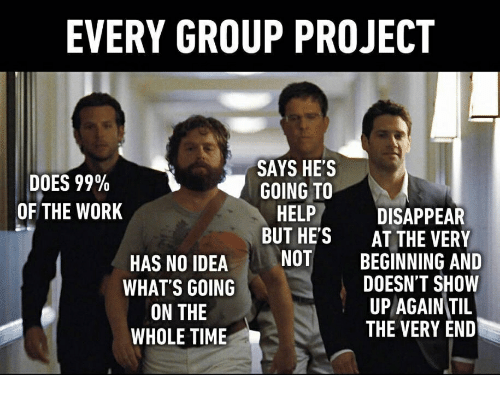
Jay shares that tagging is another culture that exists in the education system because people who aim to be associate professors or professors would have to publish 10 (or 11) papers a year. So, an easier way to ‘publish’ 10 papers a year is by adding your name to a publication that a person (typically your colleague) has been working on.
“This is an extremely, extremely political act, since refusal to allow your colleagues or superiors to tag your paper can result in you being ostracised.” – Jay.
So, if you know anyone who claims to have written some 30, 40, 50, or even 100 research papers in a year (ok, we probably exaggerate the last one a bit), do raise an eyebrow and ask, “REALLY??”
Seeing all these ‘shortcuts’…
Can we even trust Malaysian research papers??
Due to the ‘publish or perish’ culture, Malaysia ended up producing a lot of low-quality papers. And, according to SCOPUS, 11.6% of papers published in predatory journals worldwide came from Malaysia.
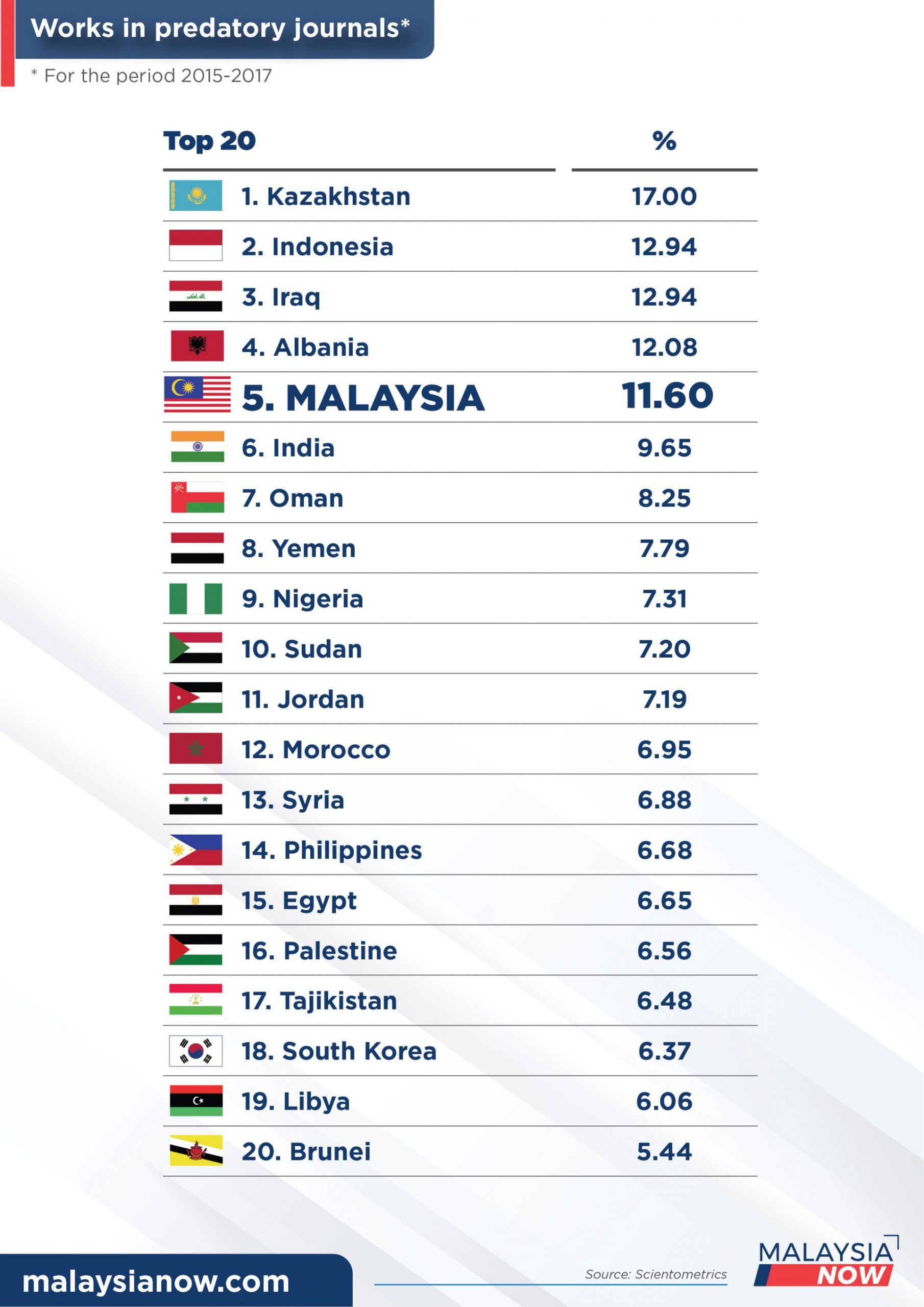
“Machacek and Srholec’s study ranks Malaysia fifth among 20 countries considered as the biggest offenders in terms of predatory journals.” – An excerpt from Malaysia Now.
But just because we have these papers, Jay mentioned that this doesn’t mean that all Malaysian research papers are a fraud. He also shared that you can actually tell which papers are actually of good quality.
One way is by checking the journal’s rankings on SCOPUS, Scimago, or Web of Science.
- Q1 – Q2 journals: really credible journals
- Q3: ok-ok but still acceptable
- Q4 or unranked: be careful. Some journals are new but most predatory journals are ranked here.
But if you don’t have time to go through all that, you can simply ask yourself some questions like is the study biased, or does it even acknowledge its limitations? Aside from that, you can also look for other existing papers that support the paper you’re looking at.
On top of that, Jay said if a journal publishes every single topic there is on Earth, then you may wanna be careful with it.
At the end of the day, a research paper is supposed to help improve society’s understanding of topics that matters. But, according to Mohammad Hussain, publishing a lot of low-quality papers would defeat that very purpose.
As an academician, Jay hopes for the day Malaysian universities would stop chasing ranks and treat rankings as a reward for hard labour instead of the other way around. However, until then, one could just hope.
- 1.5KShares
- Facebook1.5K
- Twitter9
- LinkedIn13
- Email9
- WhatsApp37

